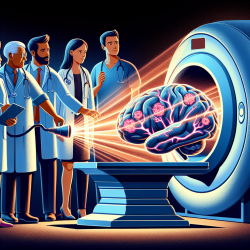Understanding the Impact of Sex Differences on Language Therapy Outcomes
In the field of speech-language pathology, it is essential to understand how various factors, including biological sex, influence treatment outcomes. A recent study titled Sex differences in effects of tDCS and language treatments on brain functional connectivity in primary progressive aphasia sheds light on this critical aspect. The study explores how transcranial direct current stimulation (tDCS) and language therapy affect brain functional connectivity (FC) in patients with primary progressive aphasia (PPA) and highlights significant sex-based differences.
Key Findings from the Study
The study utilized a novel statistical method, the covariate-assisted-principal-regression (CAPs) technique, to analyze resting-state fMRI data from 36 PPA patients. The findings revealed:
- Men who received active-tDCS showed greater changes in the default mode network (DMN) than those who received sham-tDCS.
- Women exhibited more significant changes in the language network when subjected to active-tDCS compared to sham-tDCS.
- As age increases, functional connectivity in language regions decreases, irrespective of sex and treatment condition.
Implications for Practitioners
These findings underscore the importance of considering sex as a biological factor in designing and implementing language therapy and neuromodulation strategies. Here are some practical implications for practitioners:
- Personalized Treatment Plans: Tailor language therapy and neuromodulation approaches based on the patient's sex to optimize outcomes.
- Focus on Network-Specific Changes: Recognize that men and women may respond differently to treatments in terms of brain network changes, and adjust strategies accordingly.
- Consider Age-Related Factors: Be aware of the impact of aging on functional connectivity and adjust treatment plans for older adults.
Encouraging Further Research
The study opens up avenues for further research into the role of sex differences in language therapy outcomes. Future studies could explore the underlying mechanisms that drive these differences, such as hormonal influences, brain structure variations, and genetic factors. Additionally, larger sample sizes and diverse populations could provide more comprehensive insights.
For practitioners interested in advancing their skills and knowledge, delving deeper into the nuances of sex-based differences in language therapy can lead to more effective and personalized treatment approaches.
To read the original research paper, please follow this link: Sex differences in effects of tDCS and language treatments on brain functional connectivity in primary progressive aphasia.










